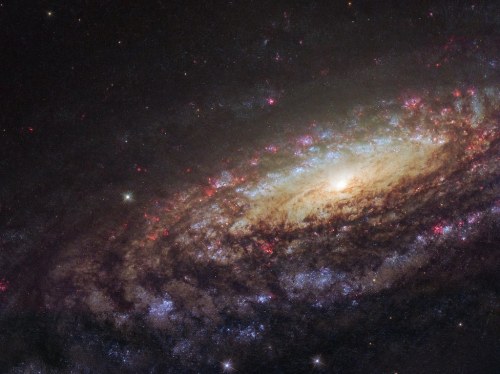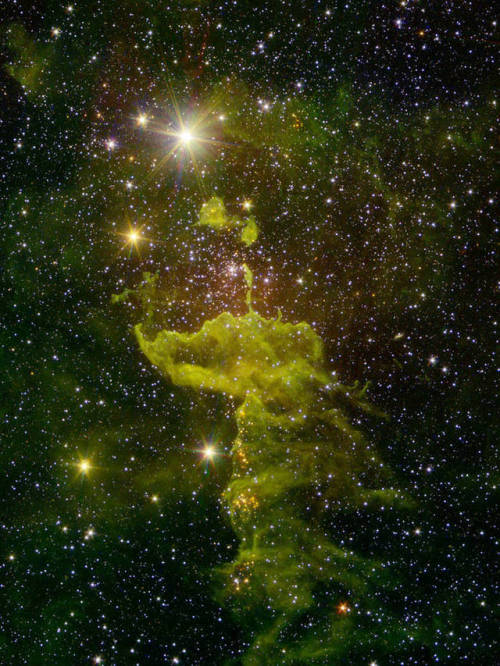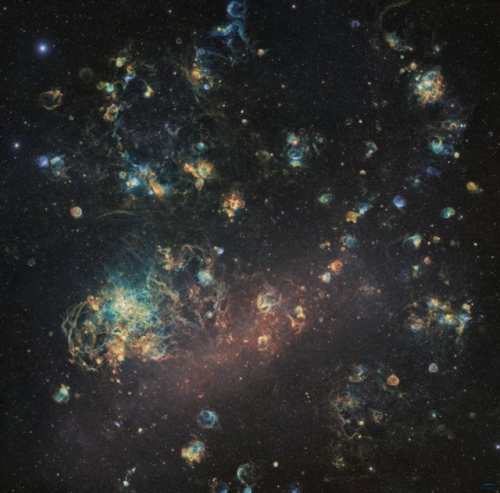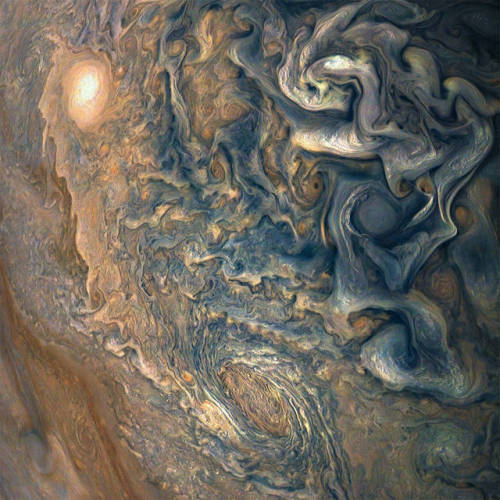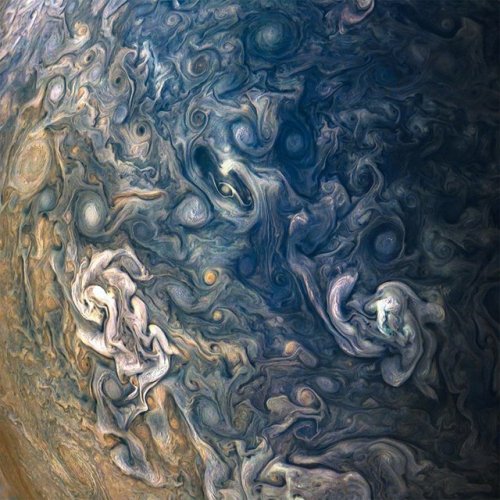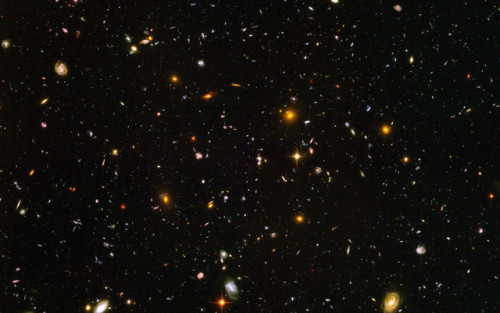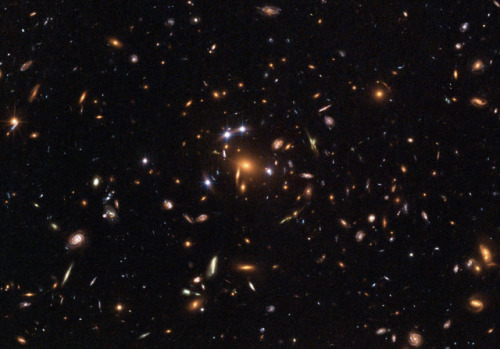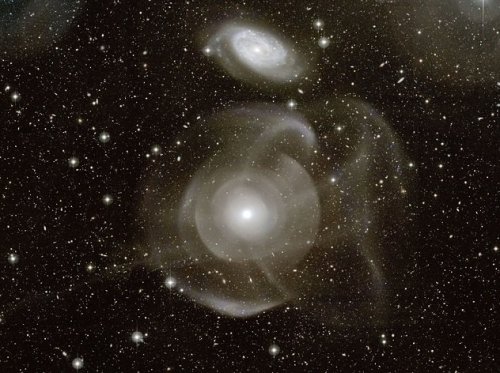#space-pics
Artist’s Impression of the First Massive Blue Starts
A (mostly) scientifically accurate “artist’s impression of the universe’s first, massive, blue stars embedded in gaseous filaments, with the cosmic microwave background just visible at the edges.”
For more space pics, follow: @space–pics
Post link
This spectacular sight is of the Large Magellenic Cloud in the southern hemisphere. This composite highlights gas clouds (which we can’t see with our naked eye from Earth) so it looks like random bubbles of gas all over in brilliant colors.
Retrieved from:
Post link
Swirls of Jupiter
Jupiter is a very stormy, turbulent, violent planet. The planet completes a day (or one complete rotation) within roughly 10 hours, which creates massive winds, producing these swirls, and violent storms. The fast rotation coupled with the fact that the planet is nothing but gas greatly multiplies the Coriolis effect. Earth too has a Coriolis effect, this creates the characteristic hurricane shapes and also contributes to the fact that storms will spin the opposite direction in different hemispheres. Luckily, our rotation is slower - our storms are less frequent and less violent than they would be if our days were shorter.
The above images come from the recent Juno mission by NASA.
Post link
The Fermi Paradox
Once upon a time, scientists decided, “what would happen if we point Hubble at this dark piece of the sky and leave the exposure open for an absurd amount of time?” Said scientists then experienced sudden bowel incontinence from the results. Vast specks of light, like the first image and when zoomed in, each individual speck of light is it’s own galaxy with it’s own solar systems.
Seeing the sheer vastness of the universe and that it’s so large, it’s incomprehensible to our feeble minds, is it possible that we’re alone? Where are all the aliens?
The Fermi Paradox tries to describe why we seem to be alone in a vast sea of endless possibilities for intelligent life to form. Life seems to form easily, surely it’s the same elsewhere.
Here’s some main bullet point arguments as to why we’re seemingly alone.
• We’re too far apart, separated by vast space and time
• We’re rare or we’re the first
• The aliens don’t have advanced technology (we don’t either). Think of it this way, an octopus or a crow is intelligent life. They’ve never even visited the moon.
• Mass extinctions happen more often than not, they might be dead or intelligent life never exists long enough to make contact with each other before it’s wiped out
• We haven’t existed long enough to be discovered or to figure out how to find others
• They’re too advanced for us
• It’s simple nature of intelligent life to eventually wipe itself out
• Intelligent life has discovered that it’s too dangers to be in contact
• We’re not listening properly for their messages. It’s like trying to listen to a CD on a record player - it won’t work.
• We’re not contacted because we’re in a simulation or an alien zoo
• Maybe they’re already here, observing
• Maybe they’re here (e.g. UFOs?) we just don’t know how to talk to them or acknoweldge them. We laugh at most UFO reports.
Post link
M87: This galaxy has the heaviest and largest black hole that scientists have ever seen. Conveniently, there’s a yo’ mama joke waiting to happen with the description of M87.
Post link
NGC 474: See that odd formation? No one really has an answer for this galaxy and why it looks so weird. Perhaps someone else on the science side of tumblr can figure out what NASA can’t.
Post link

